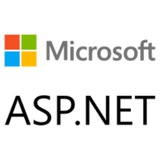What is this course about?
As generative AI becomes more accessible, it’s essential for developers to understand how to use it responsibly and effectively. To fill this need, we created a course that covers the basics of Generative AI for the .NET ecosystem, including how to set up your .NET environment, core techniques, practical samples, and responsible use of AI. You’ll learn how to create real-world .NET AI-based apps using a variety of libraries and tools including Microsoft Extensions for AI, GitHub Models and Codespaces, Semantic Kernel, Ollama, and more.
https://devblogs.microsoft.com/dotnet/announcing-generative-ai-for-beginners-dotnet/
As generative AI becomes more accessible, it’s essential for developers to understand how to use it responsibly and effectively. To fill this need, we created a course that covers the basics of Generative AI for the .NET ecosystem, including how to set up your .NET environment, core techniques, practical samples, and responsible use of AI. You’ll learn how to create real-world .NET AI-based apps using a variety of libraries and tools including Microsoft Extensions for AI, GitHub Models and Codespaces, Semantic Kernel, Ollama, and more.
https://devblogs.microsoft.com/dotnet/announcing-generative-ai-for-beginners-dotnet/
Microsoft News
Announcing Generative AI for Beginners – .NET
Introducing a new practical course designed for the .NET community to explore the world of Generative AI.
👍6❤4
New, Simpler Solution File Format
For years, you’ve worked with Visual Studio’s solution file (*.SLN) format, and while it’s a core part of your project organization, we know the experience hasn’t always been smooth. Whether you’ve been modifying, maintaining, or trying to resolve merge conflicts, it’s often felt more like a hassle than it should be. We understand your frustrations, […]
The post New, Simpler Solution File Format appeared first on Visual Studio Blog.
https://devblogs.microsoft.com/visualstudio/new-simpler-solution-file-format/
For years, you’ve worked with Visual Studio’s solution file (*.SLN) format, and while it’s a core part of your project organization, we know the experience hasn’t always been smooth. Whether you’ve been modifying, maintaining, or trying to resolve merge conflicts, it’s often felt more like a hassle than it should be. We understand your frustrations, […]
The post New, Simpler Solution File Format appeared first on Visual Studio Blog.
https://devblogs.microsoft.com/visualstudio/new-simpler-solution-file-format/
Microsoft News
New, Simpler Solution File Format
Discover the new Visual Studio solution file format (.SLNX), designed for better readability, fewer merge conflicts, and improved performance. Learn how to migrate today!
👍9❤2👀2
OpenTelemetry in Microservice Architecture with .NET 9
What us OpenTelemetry and wht you need it?
OpenTelemetry is the CNCF's vendor-neutral observability framework that unifies metrics, traces, and logs in distributed systems.
.NET9 significantly improves OpenTelemetry support with built-in instrumentation, minimal configuration, and 35% reduced overhead compared to previous versions.
https://medium.com/@serkutyildirim/opentelemetry-usage-in-microservice-architecture-with-net-9-16c2e57df59c
What us OpenTelemetry and wht you need it?
OpenTelemetry is the CNCF's vendor-neutral observability framework that unifies metrics, traces, and logs in distributed systems.
.NET9 significantly improves OpenTelemetry support with built-in instrumentation, minimal configuration, and 35% reduced overhead compared to previous versions.
https://medium.com/@serkutyildirim/opentelemetry-usage-in-microservice-architecture-with-net-9-16c2e57df59c
Medium
OpenTelemetry Usage in Microservice Architecture with .NET 9
In the realm of financial platforms (such as banking or eCommerce apps) built on microservices architectures, the complexity of monitoring…
👍10❤6
Create containers in .NET without Dockerfile?
Here is how:
Containers become the easiest way to distribute and run applications and services in the cloud.
.NET app containerization could not be done without Dockerfile where multi-stage build steps.
But, starting from .NET 7, this process is simplified.
It strips down that pre-configuration by introducing built-in container support with the dotnet publish command.
Before running a command you need to add the Microsoft.NET.Build.Containers package that will infer some of the project properties like base image, version, image repository, etc.
For now, only Linux containers are supported.
Source: Pavle Davitković LinkedIn
Here is how:
Containers become the easiest way to distribute and run applications and services in the cloud.
.NET app containerization could not be done without Dockerfile where multi-stage build steps.
But, starting from .NET 7, this process is simplified.
It strips down that pre-configuration by introducing built-in container support with the dotnet publish command.
Before running a command you need to add the Microsoft.NET.Build.Containers package that will infer some of the project properties like base image, version, image repository, etc.
For now, only Linux containers are supported.
Source: Pavle Davitković LinkedIn
👍23❤🔥3❤2
TUnit is a newer framework that launched its first alpha releases in 2024 and is on the path to a v1.0.0 release.
https://andrewlock.net/converting-an-xunit-project-to-tunit
https://andrewlock.net/converting-an-xunit-project-to-tunit
Andrew Lock | .NET Escapades
Converting an xUnit test project to TUnit
In this post I discuss the new TUnit testing framework, why I ported one of my libraries to use it instead of xUnit and related issues I had to deal with
👍5❤4
Here's your comprehensive guide to understanding and building Model Context Protocol (MCP) Servers for C# developers. It’s a great hands-on resource for exploring MCP and AI assistant integration in .NET environments. 📚 https://msft.it/6041sRjhd
GitHub
GitHub - microsoft/lets-learn-mcp-csharp
Contribute to microsoft/lets-learn-mcp-csharp development by creating an account on GitHub.
